How Scientists And Indigenous Groups Can Team Up to Protect Forests and Climate
A collaboration between Smithsonian researchers and the Emberá people of Panama aims to rewrite a fraught narrative
/https://tf-cmsv2-smithsonianmag-media.s3.amazonaws.com/filer/60/60/60603fb1-d585-485d-a59c-a08683439072/sean_mattson_2.jpg)
Lee este artículo en español aquí.
It was still morning when Javier Mateo-Vega arrived at the village meeting hall in Ipeti, Panama this past February. But the air was already hot and heavy, and the mood was tense.
The indigenous Emberá townspeople were taking advantage of Mateo-Vega's late arrival to air grievances. A man in the back complained about new houses that the government was building—sterile, zinc-roofed concrete shacks that were quickly wiping out the town’s traditional wood-and-thatched-palm huts. Others cursed the colonos—non-indigenous farmers and ranchers who were invading the community’s land from other parts of Panama. The village chiefs struggled to keep order.
Mateo-Vega, an ecologist with the Smithsonian's Tropical Research Institute, frowned with worry. The conflicts were worse than he had ever seen here. As he joined the gathering, a few men seemed to shift uncomfortably or look away, a strange occurrence in a village where he had worked for almost a decade—and where he was used to a warmer welcome. “You’re seeing the unraveling of a community,” he told me.
The people of Ipeti (pronounced ee-pet-TEE) were at a crossroads. The Emberá have long lived in the forests of eastern Panama. They know these forests inside and out: They walk, hunt and fish in them; they harvest fruit and nuts from them; they cut trees for fuel wood and building materials. But ever since a group of Emberá migrated west and founded Ipeti a few decades ago, they have grappled with outside threats to their forest-based livelihoods.
Now they were facing an existential question: Would they hold on to their traditions, or head full-speed into modernity?
Mateo-Vega hoped to help the villagers turn things around. He had driven three hours east from Panama City to lead a land-use planning workshop for this 700-person community. He knew the workshop wouldn't solve all of the townspeople's problems. But he believed he could help them in one concrete way: by giving them data they needed to make strategic decisions to protect their forests in the coming decades.
On paper, the work was intended to conserve tropical forests, crucial yet increasingly vulnerable bastions in the fight against global climate change. But Mateo-Vega and his colleagues also hoped it would also do something arguably just as important: empower indigenous communities to take charge of their environmental future, and even reclaim their identity as forest people.
“Imagine it’s 2055, and you’re in an airplane flying over your territory,” he said, as he took the floor before a group of around 50 community members. Women in brightly colored traditional skirts sat on folding chairs on one side of the pavilion; men in worn jeans, T-shirts and baseball caps sat or stood around the other. “What would you see?”
No response. That wasn't entirely surprising: The townspeople had been arguing for two hours, and it was hot. Plus, with more immediate problems facing them, 2055 felt abstract and far-off.
Behind Mateo-Vega, community leaders held two large maps that he had brought, based on data that community members had provided in a workshop the previous summer. One depicted a dystopian future in which Ipeti’s forests are almost all cleared for farmland. The other rendered a brighter outlook, in which the community was able to bring the forest back.
“This is your dream,” he said, pointing to the second map.
Still nothing. Mateo-Vega paced the concrete floor in his Teva sandals, khaki field pants, purple polo shirt and Smithsonian ID badge. Even after years of working here, he was an obvious outsider: a tall, muscular, light-skinned Costa Rican with short, slicked-back hair.
He tried a different tactic: “What are the Emberá without their forests?”
For a few seconds, the crowd was uncomfortably silent. Then one young man yelled out, “Nothing! Without our forests, we’re not Emberá!”
Mateo-Vega's face relaxed. Now they were starting to make progress.
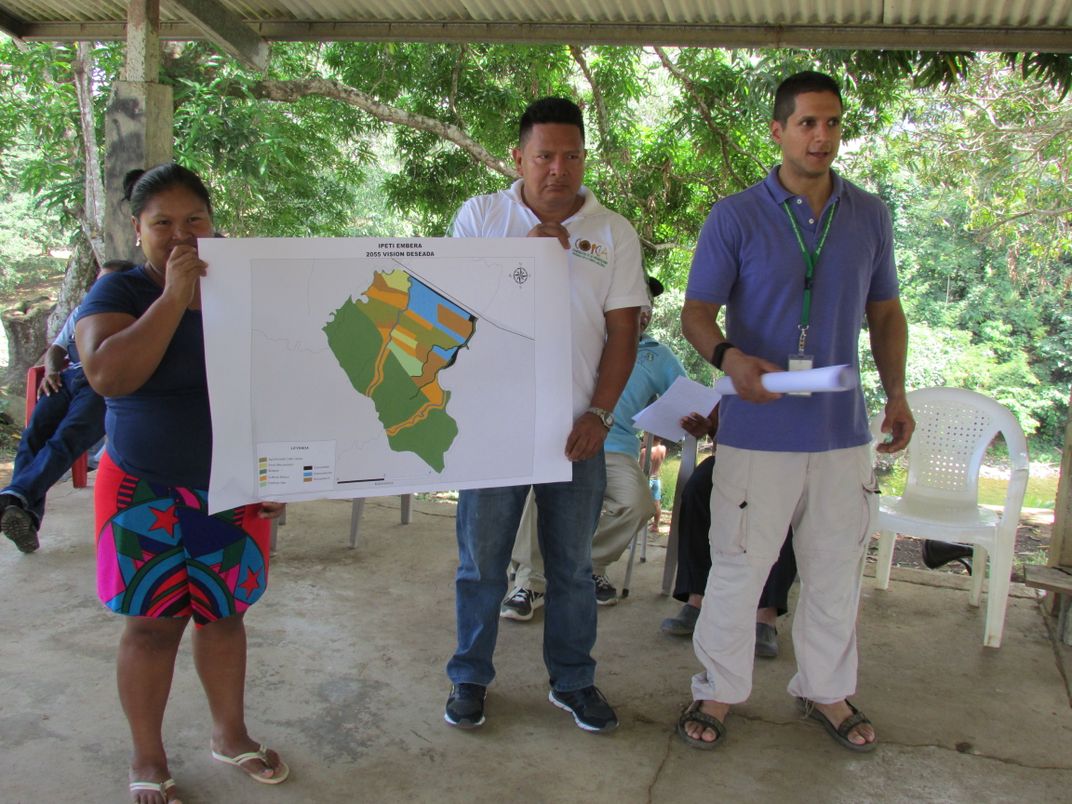
To say that the history of scientists working in indigenous territories is fraught would be an understatement. Look through the literature and you'll find stories of researchers setting their own agendas, collecting and publishing data without consent, and failing to include community members as collaborators or coauthors on studies.
“The dominant narrative is that indigenous people are not co-thinkers,” says Kim TallBear, an anthropologist at the University of Alberta who has studied scientist-indigenous relations.
In the context of this troubled history, Mateo-Vega's work could be the beginnings of a counter-narrative. In 2008, he began working in Ipeti as the director of a project to build communities’ forest restoration capacity. In 2012 he joined the research group of Catherine Potvin, an ecologist with the Smithsonian Institution and McGill University in Montreal who has paved the way for more collaborative research with the Emberá.
Over the years, Mateo-Vega says he and the people of Ipeti have come to consider each other adopted family. As he walks down the town’s main street, the villagers give him hugs and high-fives, and show off hand-carved wooden animals and hand-woven baskets. They ask about his wife, an American whom he lives with in Panama City, and his 12-year-old son, who lives in Costa Rica. “I would come here even if I wasn’t doing research,” Mateo-Vega says.
Such relationships have laid the foundation for a collaboration with the Emberá that goes longer and deeper than almost any other scientist-indigenous community partnership anywhere. In return, Mateo-Vega has gained unprecedented access to nearly unstudied forests—and, perhaps more importantly, to the Emberá themselves. They have opened their homes to him, mediated with community elders and helped design and carry out complex research projects.
"You have to break bread with them, walk their forests with them, stay in their houses, play with their children and go to their funerals,” he says. “If you don’t like doing this stuff, you’re not going to do well here.”
Mateo-Vega wants to change how science is done, but he's also hoping to do more. He aims to help bring indigenous communities into a climate change conversation that they have mostly watched from the margins. As the world’s governments, conservation organizations and indigenous communities struggle to protect forests and fight climate change, Mateo-Vega hopes to build a powerful model for others to follow.
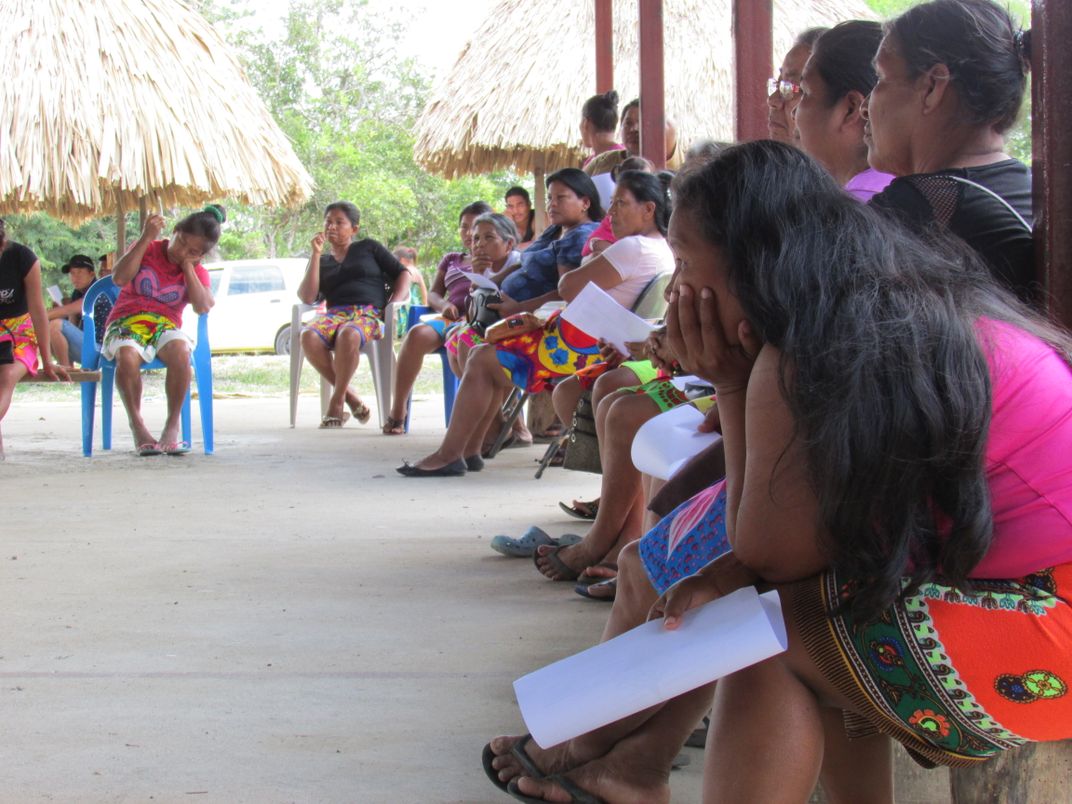
The story begins in the mid 1990s, when Potvin, Mateo-Vega's advisor, ventured for the first time to the Darién. She had heard that the remote, roadless Darién region in far eastern Panama—the Emberás’ homeland, and where most of the roughly 30,000 group members still live—nurtured a biologically spectacular forest, and she wanted to see it for herself. Getting there required a flight from Panama City and 14 hours in a dugout canoe.
“You’re very tired at the end. Your butt really hurts,” she says.
Finally, she arrived at a small village of thatched-roof huts. Villagers still spoke the Emberá language and maintained traditional practices, including adorning themselves from head to toe with paint made from a native fruit called jagua. Potvin immediately knew that she wanted to work with there. But rather than set her own research agenda, she decided to ask community leaders what research projects would help them.
“These people are immensely intelligent,” says Potvin, who is short with straight blonde hair, and whose English is heavily inflected with a French Canadian accent. “They don’t need me to tell them what to do.”
She learned that the community relied on chunga, a spiny palm whose leaves the villagers wove into baskets. As the baskets became increasingly popular with tourists, overharvesting began depleting chunga from the forest. To help the communities learn how to grow the palms themselves, Potvin brought on Rogelio Cansari, an Emberá from the Darién who had received a degree in anthropology from Texas A&M University, as a graduate student.
The pair collected seeds from the few remaining chunga plants they could find, planted them in experimental plots and determined under what conditions they grow best. Then, they worked with community members to establish plantations to supply their growing basket trade.
Crucially, they also included indigenous leaders as coauthors on scientific papers. “Catherine came with the very innovative idea of giving the opportunity to indigenous people to be part of scientific knowledge,” says Cansari, who is now studying for a PhD in anthropology at the University of Copenhagen. “It’s been very helpful for my people.” The researchers translated their papers into Spanish and presented them at community meetings, so that villagers gained access to the data and learned what was being published about them in the scientific literature.
Though she is not specifically familiar with Potvin’s work, TallBear says that the ecologist’s approach goes beyond what even most collaboration-minded scientists are willing to do. “It’s not an easy thing to do. It takes time and it slows down your time to publication,” she says. “Most people who bill themselves as doing collaborative research are not going that far.”
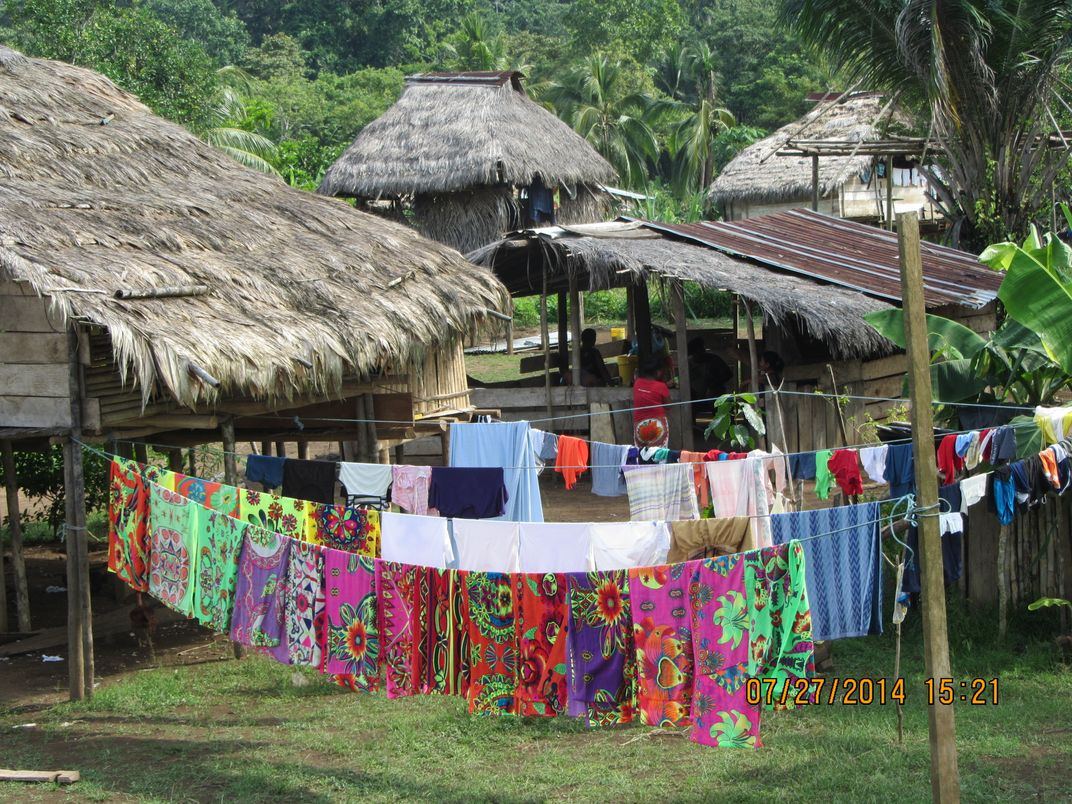
While in Darién, Potvin heard that some Emberá had migrated out of the region and settled in Ipeti. Intrigued, she visited the town herself in 1996. She found a community that was carrying on some traditions, such as living in thatched-roof houses, but that was also assimilating into mainstream Panamanian society. Traditional body painting and music had all but disappeared, and Spanish was replacing the Emberá language.
It wasn’t every day that a scientist from a prestigious university visited Ipeti, which at that time was a seven-hour drive from Panama City over a largely unpaved road. When Bonarge Pacheco—an Emberá and Ipeti’s chief at the time—heard that Potvin was in town, he put on his best clothes and joined her for dinner.
Despite previous experiences with scientists who had gathered data in Ipeti but never returned results, Bonarge says that he was won over by Potvin. “I perceived that she was a sincere person, and I had heard about her work elsewhere,” he says. They talked until midnight, and by the next day they had a plan to collaborate.
Many of the forests surrounding Ipeti had been cleared both by villagers and invading colonos, and were in rough shape. Villagers had trouble finding not only chunga, but also several types of palm needed to continue building their traditional houses—round, open-sided structures with air-permeable floors and thatched roofs that stay cool even in Panama’s punishing midday heat. As a result, community members were starting to build new houses using non-traditional materials like wood planks and sheet metal.
Potvin worked with the community to study and grow four species of palm: chunga, wagara, giwa and sabal. That work paid off: With palms growing and providing materials, Ipeti was able to continue their traditional house-building. The study also had wider-reaching effects. Villagers went back to playing Emberá music—which relies on flutes made from a bamboo that Potvin also helped them grow—and revived their important cultural tradition of body-painting.
Potvin even got herself painted. Through her years of collaboration with the Emberá, she says she felt she had earned it. “I know now there are a lot of discourses about reappropriation of these things, and it’s quite controversial,” she says. “I just find it’s beautiful.”
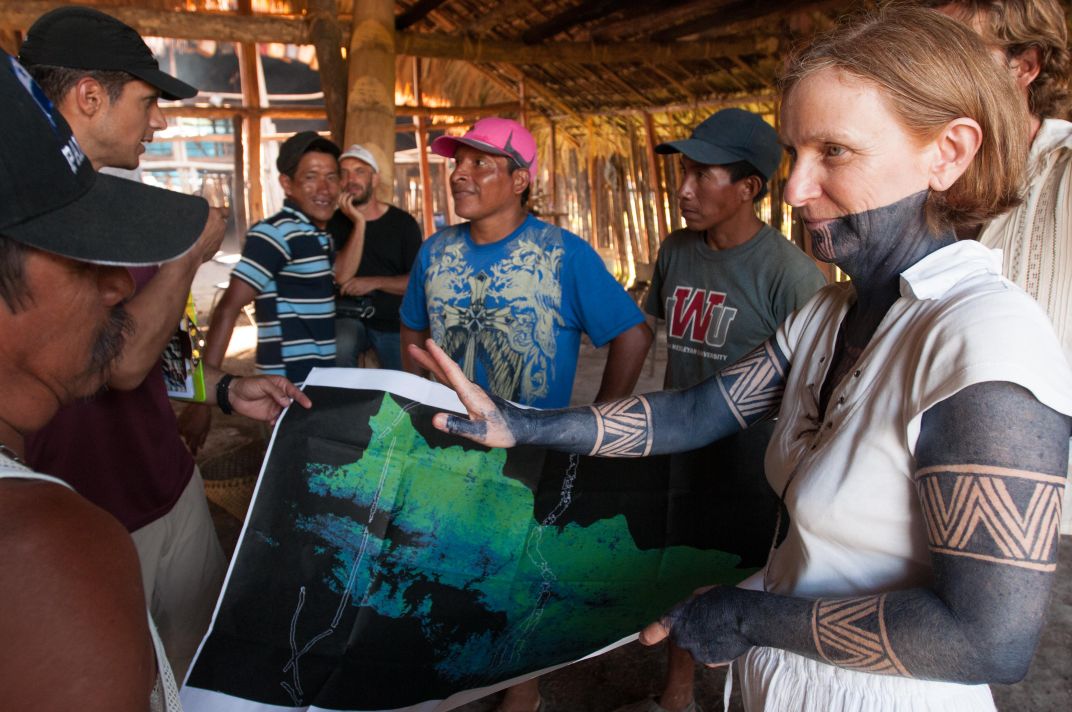
Around this time, high-level politicians and environmentalists began eyeing tropical forests like the Darién as part of global efforts to combat climate change. At the 2005 UN climate conference in Montreal, a program emerged for reducing carbon emissions from burning or clearing of standing forests, which accounts for 10 to 15 percent of all greenhouse gas emissions. The program was christened with the acronym REDD, which stands for “reducing emissions from deforestation and forest degradation.”
The basic idea is simple: Trees are roughly half carbon by mass, and growing trees devour and store carbon dioxide, the gas responsible for most human-caused climate change. To provide an incentive to keep forests standing, climate negotiators envisioned a carbon market through which wealthy countries responsible for most carbon emissions could pay poorer countries to protect forests. While no one thought such a scheme could prevent climate change, it seemed like a good strategy to at least slow it down.
Getting REDD+ (the ‘+’ was added in 2007 to include improved forest management) to work on the ground, however, has been anything but simple. Tropical forests grow in dozens of mostly poor countries, whose governments often lack the will or ability to protect them from the myriad threats they face: illegal logging, mining, cattle ranching, farming and more. A widely cited 2013 analysis of satellite data collected between 2000 and 2012 found that forested areas shrank in nearly every tropical country besides Brazil, often by staggeringly large amounts.
Moreover, few developing-world governments are equipped to make the systematic measurements needed to verify that additional carbon is really being sequestered. “REDD+ is frequently presented as a climate success story, partly because the idea looks so simple and appealing,” wrote economist Arild Angelsen and biologist Louis Verchot of the Center for International Forestry Research in Indonesia in 2015. But outside of Brazil, “there are few stories of substantial early progress," the authors wrote.
Then there is the fact that indigenous communities often have uneasy relationships with their national governments, and have rarely been included in discussions where the mechanics of REDD+ were developed. As a result, they are wary of carbon-focused schemes that might restrict what they can do in their forests.
This may be starting to change. At the 2015 UN climate conference in Paris, a coalition of indigenous groups and scientists released a report pointing out that more than a fifth of the world’s tropical forest carbon is in indigenous territories, and calling for stronger land rights and inclusion of indigenous people in climate negotiations. Research supports this argument: A recent study published in the Proceedings of the National Academy of Sciences showed that recognizing the rights of indigenous people in the Peruvian Amazon has helped protect forests there.
But rarely have indigenous groups received recognition or compensation for protecting their forests. The 2015 Paris agreement mentions indigenous peoples in several places, but does not guarantee them a role in countries’ climate action plans.
“Governments are like cash machines going click, click, click, click, click—they see this green fund as a great source of new funding,” said Cándido Mezúa, an Emberá leader from the Darién and a coauthor on the 2015 report. “To really achieve the protection of forests, the only way is to recognize the rights of people in the forests and to title our lands.”
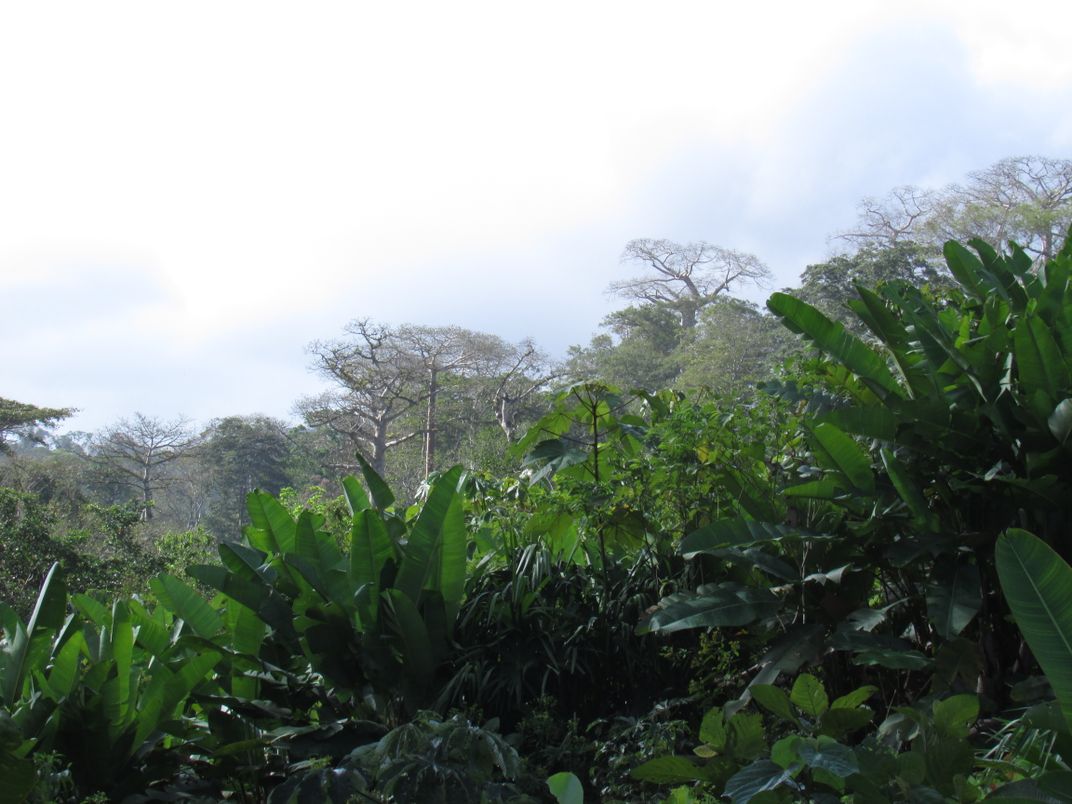
Today, Potvin and Mateo-Vega see their work as a case study in how science could support the kind of protection Mezúa envisions. More than half of the country’s primary forests are in indigenous territories, according to an analysis by Potvin’s group. But before the UN talks, they had never had a reason to think about how much carbon their forests hold. As Cansari puts it: “Carbon is not something that indigenous people can touch.”
Potvin, who attended the climate talks as a negotiator for Panama, told her Emberá contacts about the carbon market discussions. Fearing being left out, community leaders asked her to help them measure how much carbon their forests contained. She agreed. Starting in Ipeti, she trained community members to record the diameters of trees in community-managed forest, agroforestry plots (plantings of fruit- and materials-providing trees) and cow pasture. They then used standardized equations and statistical methods to convert individual tree data into estimates of carbon stored in a given area.
They found that Ipeti’s forests contained about twice as much carbon per area as agroforestry plots, whereas the pastures, unsurprisingly, contained little carbon. Because the study was the first to quantify the carbon stored in Ipeti’s forest, it provided a crucial foundation for the community to explore getting involved in the emerging carbon market.
Equally important was the attention the study brought to Ipeti’s remaining forests, says Pacheco. At the rate Ipeti residents and colonos were clearing trees, half the remaining forest would be gone within a decade, the researchers found. Community members took note and dramatically slowed the rate at which they cleared forests for agriculture. As a result, about half their territory remains forested today—in contrast to Piriati, a neighboring Emberá community where Potvin did not work, and which eventually lost all of its forest.
“We call it the Potvin effect,” Pacheco says.
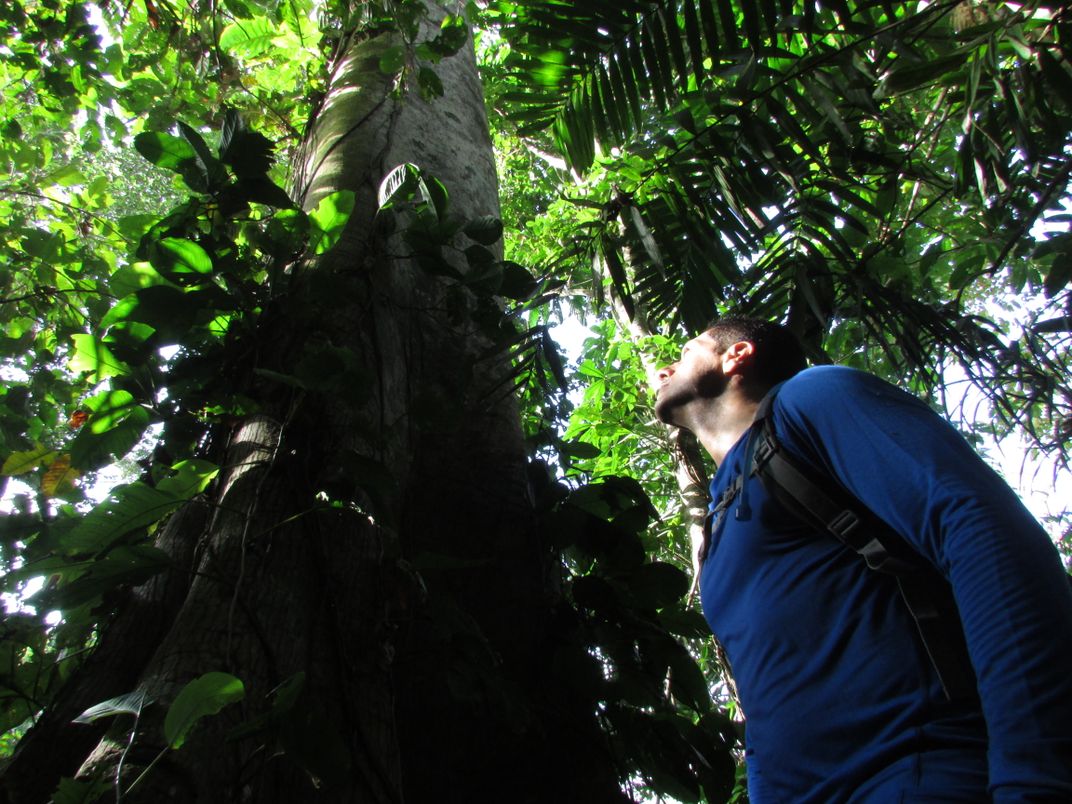
A few years later, Potvin, Mateo-Vega and Emberá leaders began planning a forest carbon measuring campaign in the Darién, with support from the Environmental Defense Fund and the World Bank. The challenges would be much greater than in Ipeti—field teams would need to trek in equipment by foot or canoe for stays lasting weeks, and they would need protection from the guerrilla warfare in neighboring Colombia, which threatened to spill across the border. The mutual trust Potvin and Mateo-Vega had spent years building would be essential.
Mateo-Vega hired an Emberá assistant, Lupita Omi, whom he knew from working in Ipeti, to arrange meetings with village chiefs. (The two have become so close they now call each other hermanito and hermanita—Spanish for “little brother” and “little sister”.) In 38 separate meetings, the pair explained their project’s goals and how the collected data would benefit communities. Deliberations could last up to five hours, because community members were wary of any initiative that carried even a whiff of REDD+.
“The communities really listened carefully to every word,” Omi says. “They realized it could affect their livelihoods and their territories.” In the end, every community accepted the project.
Mateo-Vega then hired and trained a crew of forest technicians from Darién and Ipeti, and plunged into the forest. They set up camp, sent hunters out after monkey or iguana for the night’s dinner, and got to work staking out square plots 100 meters (slightly longer than a football field) on a side and measuring the height and circumference of every tree larger than 50 centimeters in diameter.
The work was arduous. The heat could be brutal, and rainy season downpours turned forest soil into mud. Trails had to be cut from the dense understory with machetes, pit vipers lurked everywhere and nasty spines that grow on many plants could easily puncture boots and skin. The threat of violence was never far from the team’s thoughts, although they were never attacked. On one outing, a canoe carrying members of the security team and their ammunition capsized in a rapid, and they had to abandon the trip, even though it meant leaving two remote forest types unmeasured.
But for their efforts, Mateo-Vega and his crew got access to forests that virtually no scientists had ever studied. They discovered a tree that shattered the record for the largest in Panama. The crew’s measurements revealed that some of its forests were far more carbon-rich and replete with biological diversity than anyone had documented.
Mateo-Vega has come to believe that the underappreciated Darién—one 19th-century explorer described it as a “green hell”—deserves to be ranked among the world’s great forest regions. “In our opinion it’s the Amazon of Central America,” he says. On the last day of his last field trip, he saw a jaguar swimming across a river—a first for him in his 35 years working in the rainforest. He still dreams of going back.
In addition to collecting valuable data, Mateo-Vega’s team proved a larger point: that community members with proper training but no prior science background could take forest measurements just as well as scientists. And they could do it at a fraction of the cost. Similar success stories from collaborations elsewhere suggest REDD+ could be widely implemented and monitored directly by communities that own much of the world’s forests.
“When trained and when incentivized … they can collect as high-quality data as anybody else,” says Wayne Walker, an ecologist at the Woods Hole Research Center who led a community-based carbon measuring project in the Amazon.
Potvin has published guidelines for such collaborative research on the McGill website. Other hints are also emerging that science may be shedding its colonial heritage. In March, the San people of South Africa issued what is thought to be the first code of research ethics put together by indigenous people in Africa. First Nations peoples of Canada and Aborigines in Australia have developed similar codes.
Mateo-Vega and his collaborators recently added their own contribution to this growing literature, publishing their methods and results in the journal Ecosphere. Emberá communities are now prepared to collect data to support REDD+ or any other future carbon compensation scheme, they wrote.
“We worked ourselves out of a job—which was the plan,” Mateo-Vega says.
…
Armed with data, the Emberá communities set about figuring out the next step: how to use it. In Ipeti and Piriati, which only received formal title to their lands in 2015, the consensus was a series of land use planning workshops to map out how land use decisions would affect their forests.
The workshops have been “an awakening” for the communities, Mateo-Vega says. He recalls one elder in Piriati crying as he realized his daughters had never seen the forest or eaten bush meat—the native game animals Emberá people have traditionally hunted. “They realize they have gotten off track,” he says.
Back at the land use meeting in Ipeti, as Mateo-Vega continued to explain the data visualized by his maps, his audience had begun to open up. Community members were reflecting on what they had lost as the forest had disappeared. “Before, we ate peccary and deer,” one man said. “Now we have to have park rangers.”
Another lamented that they were eating introduced tilapia, rather than native wacuco fish that used to thrive in streams protected by forests. “I’m Emberá; I want to live like an Emberá,” he said.
By the end of the meeting, community members were in agreement: They needed to bring back the forest. But given that farming often brings in quicker—and much-needed—profits, how exactly they would do this remained to be figured out.
After the crowd dispersed, Mateo-Vega huddled with community leaders. They were contemplating a concept they called Emberá-REDD. They would consider participating in the UN program, but on their own terms, not ones cooked up in Panama City or Washington, D.C.
Young people could be employed to measure carbon and patrol the territory to ensure colonos did not destroy their forests, one leader suggested. REDD+ would thus be not just about trees and carbon, but about jobs and education—and about food security and cultural preservation.
“We need to protect the forests for our own reasons,” said Mezúa.
The forest would come back. The communities would go back to eating bush meat and gathering medicinal plants. They would build their traditional houses again.
What about the ugly government-built houses, Mateo-Vega asked.
“Maybe they’ll be used for storage,” said Sara Omi, Lupita’s sister and head of the Emberá’s regional congress.
Mateo-Vega liked what he heard. But he and Potvin are quick to emphasize that their job is not to choose whether or not the communities ultimately accept REDD+, or make any other decision for them. Rather, it is to empower communities to make their own informed choices.
They acknowledge that this is not always the easiest or quickest or most glamorous way to do science. But it’s the right way. “It’s a partnership and a relationship of equality,” Potvin says. “I think of it as decolonization.”